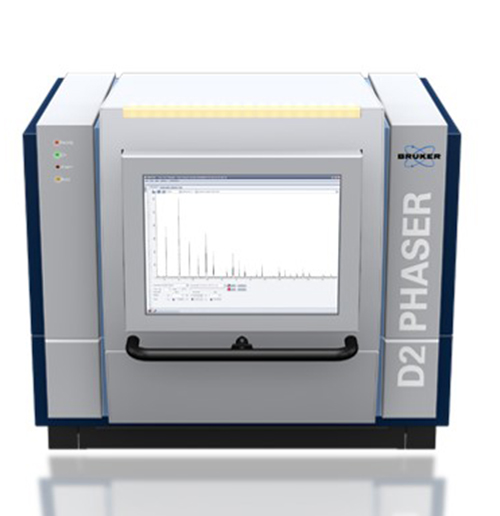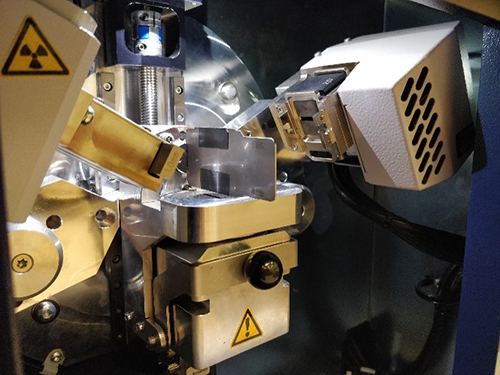

Available Methods and Accessories
The D2 phaser is a compact benchtop diffractometer for powder XRD applications in Bragg-Brentano geometry. It is equipped with a Copper X-ray tube and a LynxEye linear detector for high-speed data collection in the standard mode.
Sample Requirements
Ordered/crystalline and semi-crystalline materials:
- Powders: 20 mg – 3 g
- Solids: < 35 mm (diam) x 7 mm (height)
Summary of Technique
The XRD instrument works by irradiating a sample with a beam of incident X-rays while the beam and detector move in a synchronized motion. The crystalline parts of the sample exhibit long-range order of repeating arrangements of atoms, molecules, or ions, diffracting the X-rays into many specific directions. The signal produced by the sample is recorded in a diffractogram displaying the scattered intensity as a function of the angle between the incident and the diffracted beam. This pattern reveals information related to the atomic structure of the sample.
Information Provided & Detection Limits
XRD provides information on atomic or molecular crystalline structure and phases. It can also be used to confirm if a sample is XRD amorphous.
Detection limits. XRD detection limit is usually in the range of 1-2% vol.
Lab Location and Contact Information
Location: IMS X-ray Laboratory
Lab Manager: Daniela Morales
daniela.morales@uconn.edu
860-486-1824